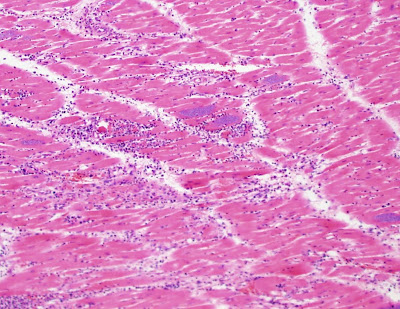Answer: Probable infection with
Strongyloides stercoralis. Other larvae, such as those of hookworm species, can have a similar appearance on agar culture, and thus it is important to correlate the laboratory findings with the clinical presentation. In this case, the patient had a long standing eosinophilia, consistent with ongoing autoinfection with
S. stercoralis. Microscopic examination of the larvae can also confirm the identification.
MicrobeMan gave a great description in his comment to this post:
"The nutrient agar plate very nicely demonstrates the production of furrows left in the wake of the migrating larvae, which emanate away from the central "dollop" of feces. The bacteria are dragged along by the migrating worms and grow in the furrows, which acts as an indicator for larval migration. As a side note, this particular scenario can play out in vivo, as well. In the host, gut flora can be introduced outside of the intestinal lumen by larvae that have penetrated the intestine."
The last point above is very important; bacteria introduced into the blood stream by migrating larvae can cause bacterial sepsis and contribute to the morbidity and mortality of strongyloidiasis.








